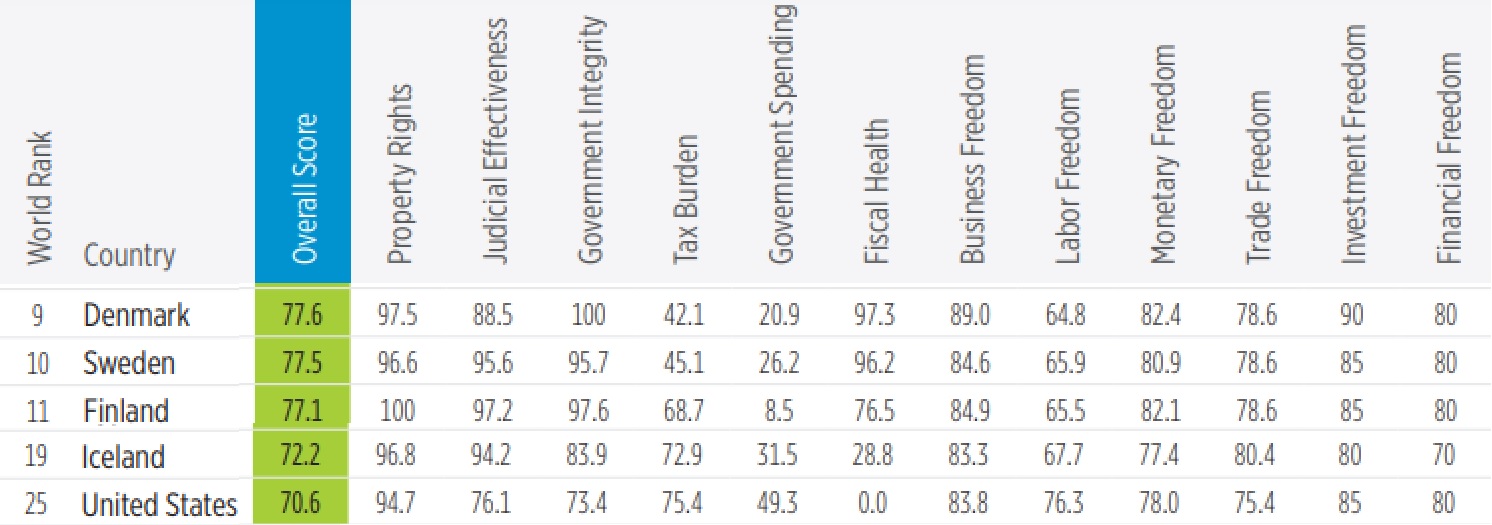There is a recipe for achieving growth and prosperity and I used a grade-point-average analogy earlier this year to explain why it is important to get all the ingredients correct.
Let’s look at some empirical data. I wrote back in March about the Heritage Foundation’s 2023 Index of Economic Freedom, mostly to express pessimism about a worldwide decline in economic liberty.
But I also groused that the United States had fallen to #25 in the rankings.
And I noted that score put America “lower than many European welfare states” because those nations “have higher fiscal burdens, but are more market-oriented in areas like trade and regulation.”
Here’s the proof.
As you can see, the five Nordic nations all rank above the United States. But notice that the United States gets much better scores on “Tax Burden” and “Government Spending.”

The reason these other nation rank above the United States is that they generally get better scores in other areas. So they offset the damage of bad fiscal policy by being better than the United States for things like property rights and trade.
By the way, the United States does better if we instead look at the Fraser Institute’s Economic Freedom of the World. America is only behind Denmark when comparing overall grades for America and the Nordic nations.
But if you remove the fiscal policy variables, the U.S. looks worse and the Nordic nations look better. Which is also what we saw a few days ago when reviewing the Historical Index of Economic Liberty.
———
Image credit: pixelcreatures | Pixabay License.

